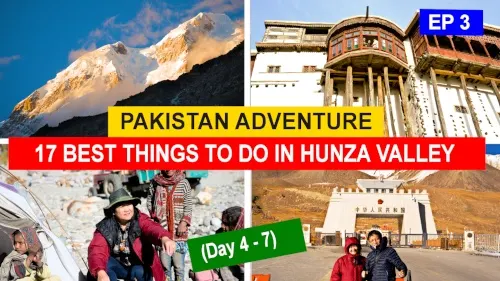
During our 11-day trip to Pakistan, we visited Hunza Valley and the surrounding areas for three days. Even though this post may seem lengthy, I assure you that visiting Hunza Valley is worth it. It is indeed one of the most beautiful areas of Pakistan, and the scenery is truly astonishing. I hope this article will be useful when you want to visit Hunza Valley.
This post will provide a detailed account of all the places we visited and things we did in Hunza Valley from day three to day five. If you want to read more about our travels in Pakistan, please click on the link at the end of this article.
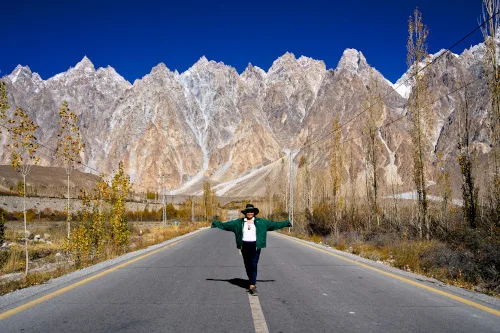
Day 1
We stayed overnight at the Serena Hotel in Gilgit. After a restful night, we woke early to enjoy the beautiful morning in the hotel's garden.
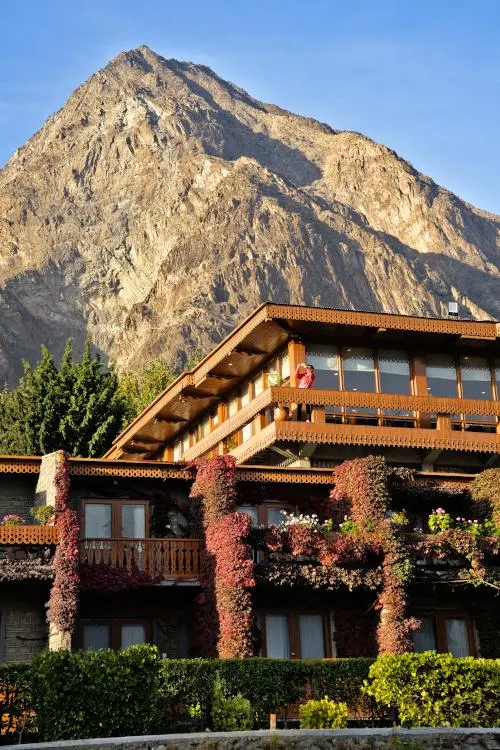
It was exceptionally stunning due to its location, surrounded by mountains. Some of us woke up even earlier to witness the sunrise when the golden rays shone onto the snow-capped peaks from the distance.
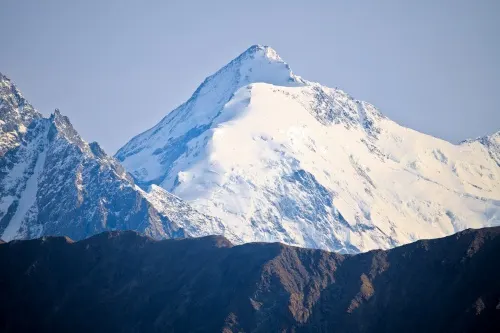
1. Gilgit Kargah Buddha
Our first stop today was to visit the Gilgit Kargah Buddha. When we arrived, we had to walk a few minutes from where our coach stopped, passed a stream, and climbed a few flights of stairs before reaching the viewpoint nearest to the Buddha carving.
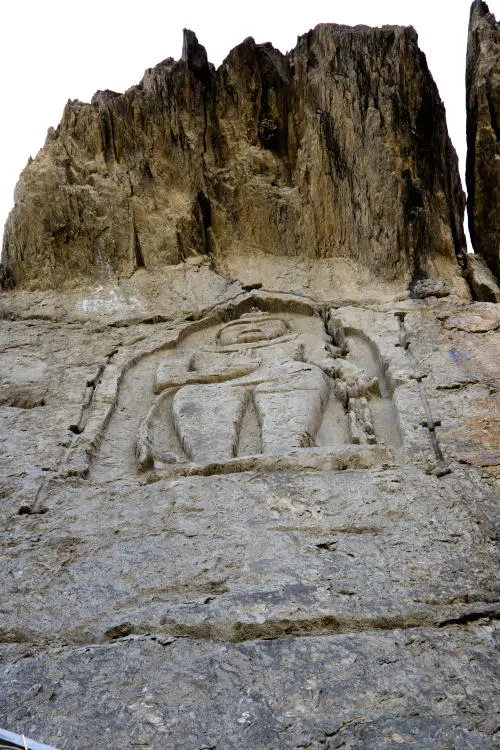
We took some photos at the viewpoint platform, and some of us climbed up to the cliff to get a better angle for photos.
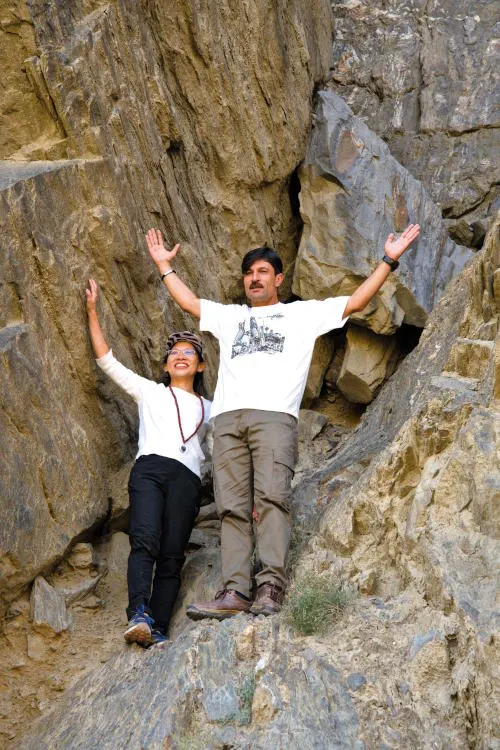
There is a small hut before the stairs with a whole grinding apparatus used by the ancient people to grind nuts to extract the oil and others such as buckwheat, barley, and corn.
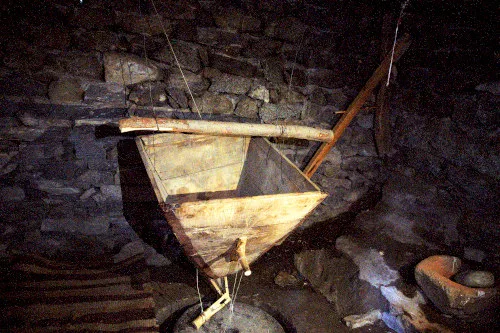
After that, we walked back to our coach and saw some children staying nearby on the way. They were a bit shy, but we convinced them to take photographs with us.
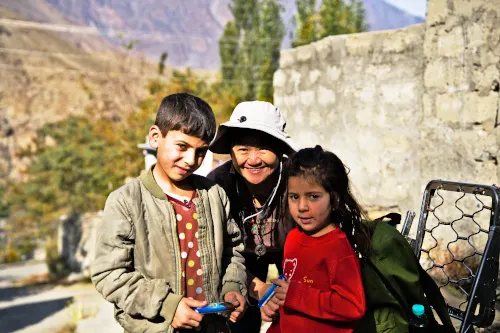
The Kargah Buddha is an archaeological site about 6 miles outside of Gilgit. It is a magnificent carving of a giant standing Buddha, believed to have been created during the 7th century. The carving is surrounded by holes that may have been used to support a wooden structure that would have sheltered it from inclement weather.
It was discovered in 1938–39 and is associated with Yatshini, a man-eating giantess or witch who terrorized the residents. According to the legend, Yatshini was pinned to the cliff by a holy man as punishment. The carving of the Buddha is also believed to be associated with this legend.
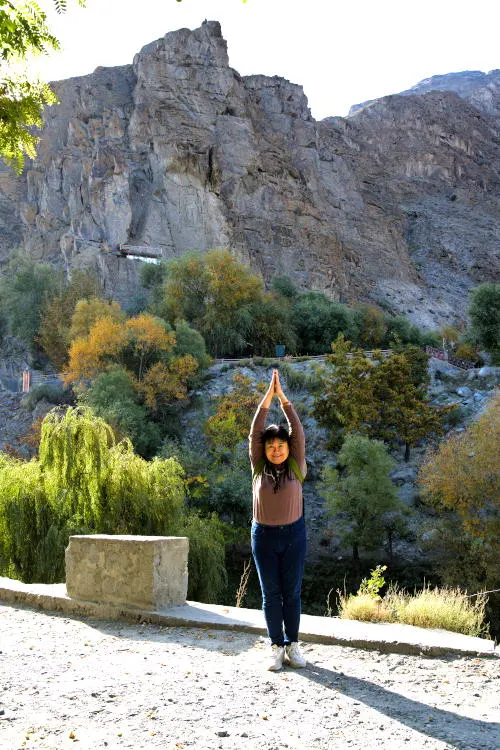
2. Gilgit Bazaar
Our next stop is at the bazaar adjacent to the Gilgit River, where we can immerse ourselves in the local market culture.
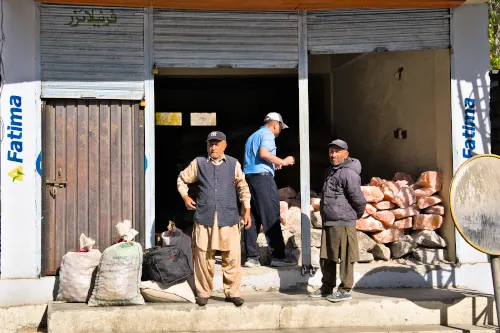
Our guide took us to buy some Himalayan salt. This salt is renowned for being the purest salt on the planet. It is believed to contain essential minerals for our health, such as potassium, calcium, and magnesium. The pink color of Himalayan salt is due to its high mineral content.
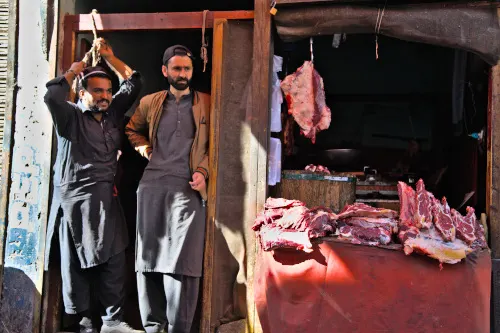
Gilgit market offers a variety of items for sale, including fresh produce such as vegetables and fruits, as well as some meat shops and household items.
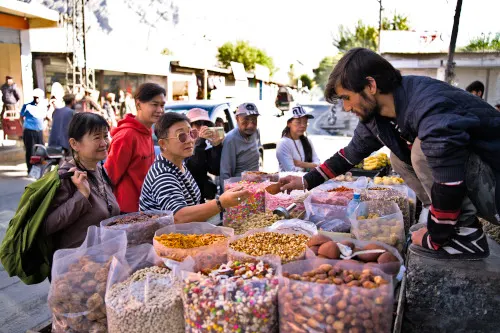
We also walk to the other side of the river via the new Gilgit Bridge.
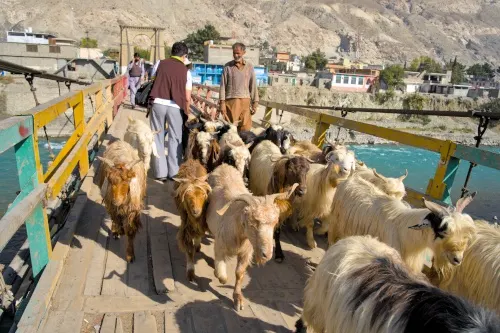
3. Where the continents collide
Here is where continents collide in the Gilgit-Baltistan region.
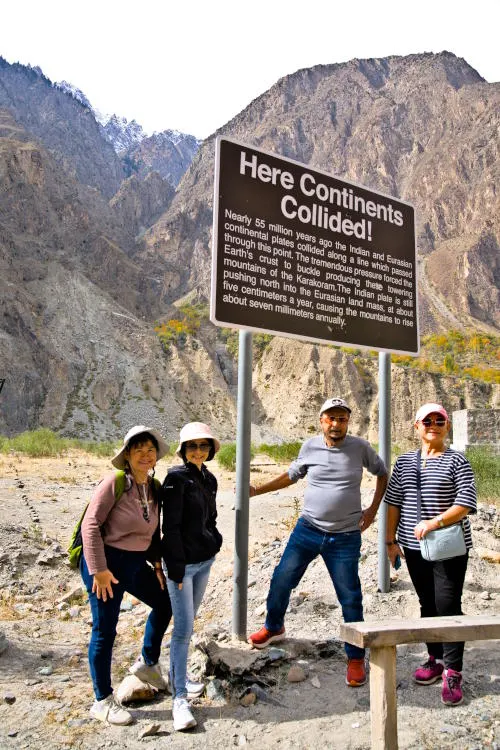
Nearly 55 million years ago, the Indian and Eurasian continental plates collided along a line that passed through this point. The tremendous pressure forced the Earth's crust to buckle, producing the towering Karakoram mountain range. The Indian plate is still pushing off into the Eurasian landmass at about five centimeters a year, causing the mountains to rise about seven millimeters annually.
4. Old Silk Road
We continued our journey to a point where we could see the old Silk Road. Locally known as "Kinu-Kutto."
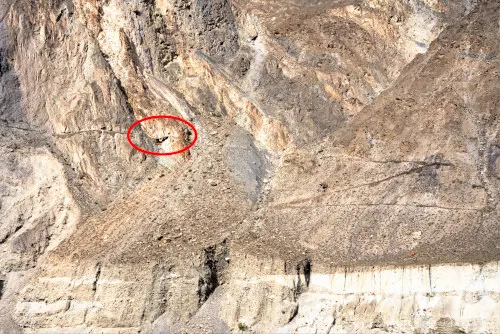
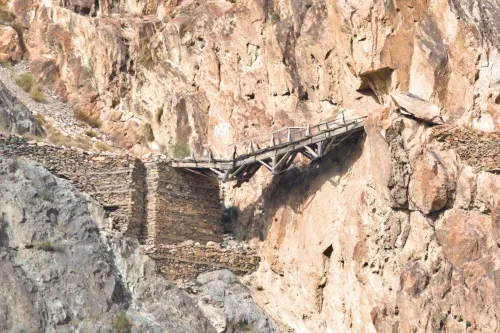
This section of visible road high up on the cliffside across the river evolved from a footpath into a pony track and was later widened into a jeep road from 1958 to the 1960s. However, with the construction of the Karakoram highway in the 1970s, the Old Silk Road fell into disuse.
5. Rakaposhi Glacier Viewpoint
We traveled along the Karakoram Highway and stopped at the Rakaposhi Viewpoint Hotel for lunch. We truly enjoyed our meal right in front of the Rakaposhi mountain.

At this point, we were at 1950 meters, watching the highest unbroken slope on Earth with its gleaming Ghulmet glacier.
It is the only mountain on Earth that plummets directly, uninterrupted, for almost 6000 meters from the summit to its broad base, which measures nearly 20 kilometers from east to West.
Starting in 1938, several attempts were made to conquer Rakaposhi. In 1958, a British Pakistan Expedition with Mike Banks and Tom Patey made the first successful ascent, reaching the summit via the southeast ridge around the prominent Monk's head.
6. Our guide invited us to visit his family
After having lunch, our guide Ali kindly invited us to visit his family, which was only a 20-minute walk away from the Rakaposhi viewpoint. He had a huge apple tree in his front courtyard, and we all enjoyed picking and eating the fresh apples.

We are truly grateful to Ali for allowing us to visit his family and witness the typical village houses in the region of Pakistan. Thank you for your hospitality, Ali!

7 Baltit Fort and Karimabad Bazaar
After visiting his family, we visited Baltit Fort at Karimabad Hunza. The fort is today's last destination before we stay overnight at the Hilltop Hunza Hotel.
After checking into the hotel, we strolled up the hill to Baltit Fort, passing through the Karimabad Bazaar.
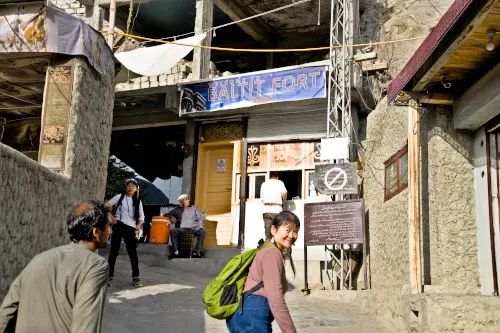
A designated tour guide at the fort explains to us various objects, architecture, and the fort's history. He took us on a tour, showing us the guard room, the Royal kitchen, the dungeons, the assembly hall, and the music room.
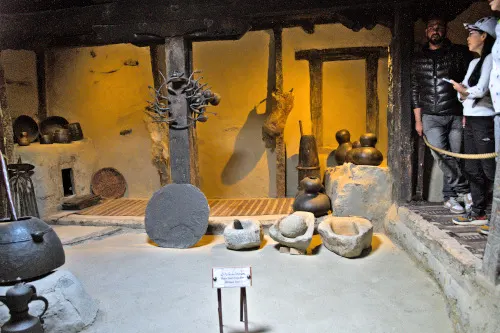
Baltit Fort is a historic fort located near Karimabad, Hunza Valley. The fort is a three-story building made of wood, stone, and mud plaster and contains granaries and stores in its basement.
The fort was constructed over 700 years ago and served as the residence of the Mirs of Hunza. However, in 1945, it was abandoned, and the Mirs relocated to a new palace down the hill.
The fort is a museum managed by the Baltit Heritage Trust. The museum has simple stained-glass windows and houses local antiques, including antique Russian rifles gifted to the Mir of Hunza. Visitors can also see the fort's historic cannon on display.
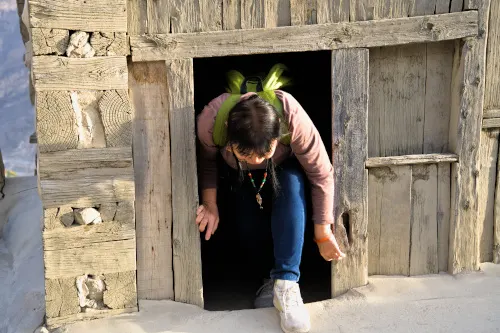
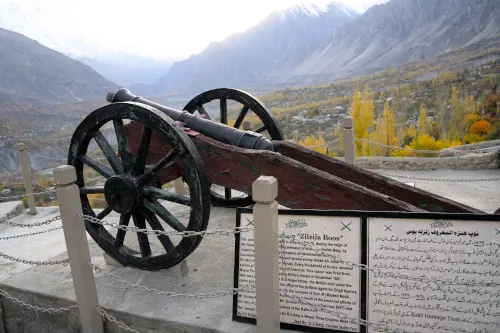
Before sunset, we returned to the Karimabad market to buy some souvenirs and dried nuts.

Later, we slept comfortably at the Hilltop Hotel and captured magnificent night photographs of the snow-capped mountains.

Watch the video we visit Hunza Valley at the end of this article 👇👇.
Day 2
The following day, we were at the rooftop of the hotel. The golden rays of the sun illuminate the majestic mountain ranges, revealing every detail and creating a breathtaking tableau of natural beauty.
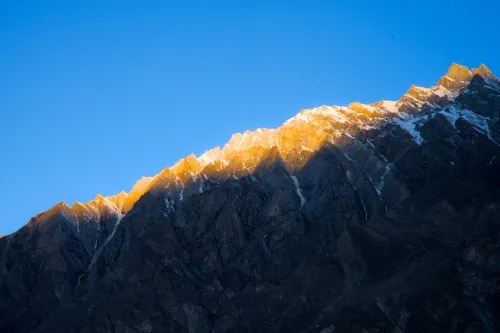
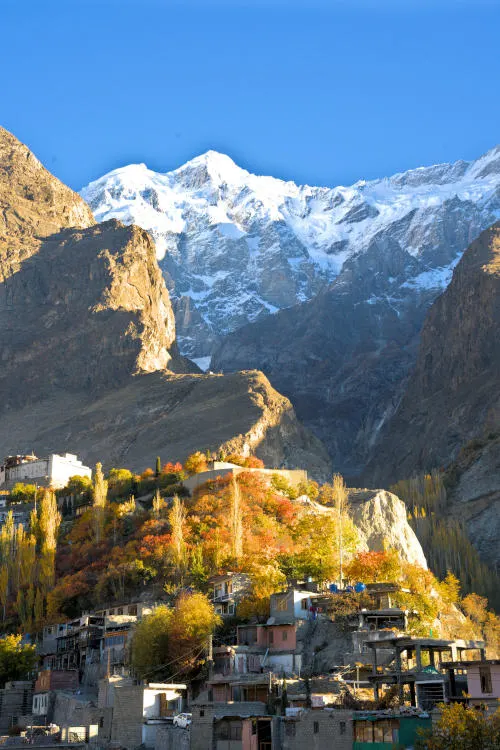
8. Best viewpoint of Lady's Finger
We checked out the hotel, drove on a highway, and stopped at a perfect viewpoint to witness the grandeur of the Lady's Finger and Ultar Peak.
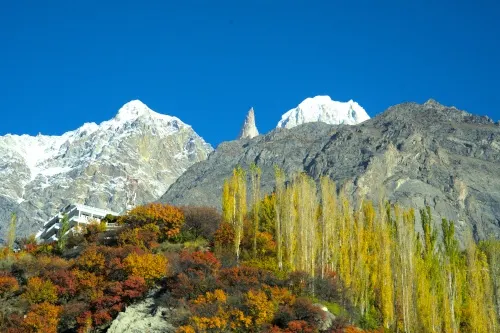
Also, stop by whenever something is interesting, including Ganish Rock calving with multiple languages on the rocks along the Hunza River. And according to my guide Ali, Marco Polo has been here before. This place is also part of the original Silk Road.
9. Attabad Lake
Our coach went through a series of five tunnels to Attabad Lake.
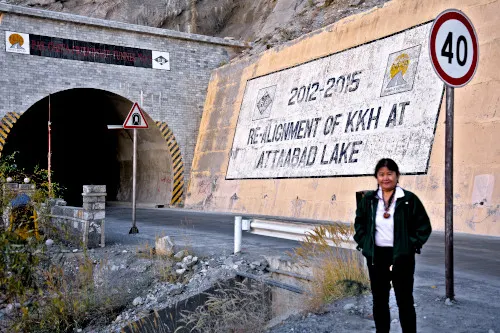
Attabad Lake was formed in January 2010 after a massive landslide in Attabad. The upper Hunza population of 25,000 was cut off. Boats were the only means of communication until 2015, when the Karakoram Highway was built.
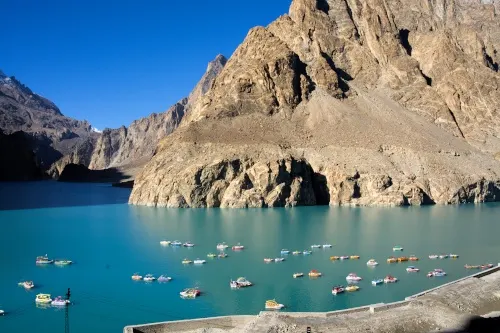
The lake, known for its stunning turquoise waters, has become a popular tourist destination in the region, attracting thousands of visitors annually. Attabad Lake offers a range of exciting activities, such as boating, jet-skiing, fishing, and other recreational activities. Due to our tight schedule, we did not participate in any activities. We will instead be taking photos and enjoying the scenery.
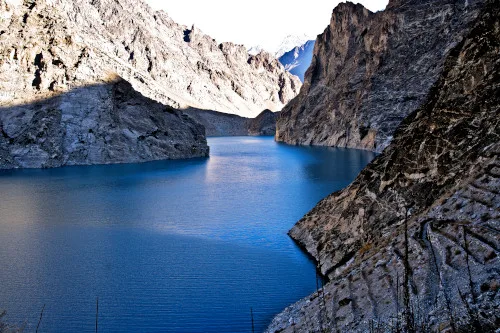
10. Hussaini Bridge (Hunza Suspension Bridge)
Our next stop is the Hunza Suspension Bridge, Hunza Valley's most popular tourist attraction.
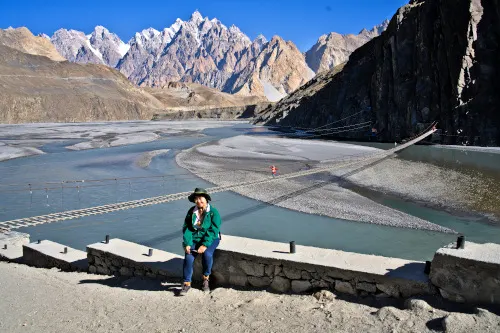
Hussaini Suspension Bridge, also known as Hussaini Hanging Bridge, is a suspension bridge over the Hunza River and connects the villages of Zarabad and Hussaini.

The bridge is expected to be precarious and dangerous, with missing planks and strong winds that shake the bridge we crossed.
Today, we have perfect weather and no wind, so we don't feel it is as dangerous as most people describe. Despite that, it was still a little nerve-wracking as we were still required to put on a life jacket before we were allowed to walk on the bridge.

Some of us walk halfway and come back, while others walk to the other side and take the zip line on the returning journey.
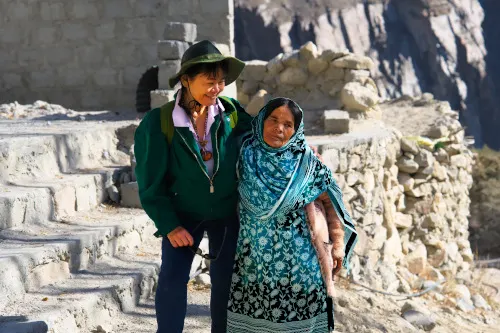
The bridge was washed away in a 2011 monsoon storm, but it was rebuilt.
11. Passu Glacier
During our journey towards the Kunjerab Pass, we stopped at the viewpoint of Passu Cones to take photos of the Passu Glacier.

Later, we had lunch at Karwan Restaurant in a small town called Sost, where they served us fresh naan, soup, and curries.
After lunch, we continued our road trip towards the Kunjerab Pass, which marks the border between Pakistan and China.
12. The Khunjerab Pass at Khunjerab National Park
Located at the Pakistan-China border, the Khunjerab Pass is a natural wonder of rocky mountains and snow-capped surroundings. The sky is a deep shade of blue, creating the perfect scenery and weather for photography to capture the stunning landscape.
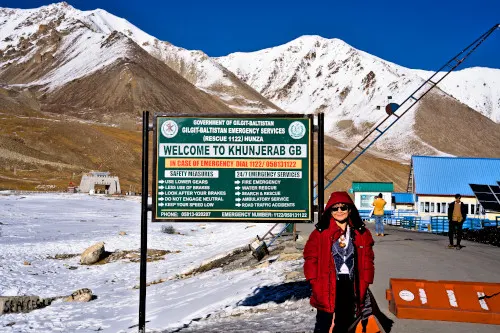
The National Bank of Pakistan is also home to the world's highest ATM.

After a long day of travel, we returned to the Hilltop Hotel for an overnight stay.
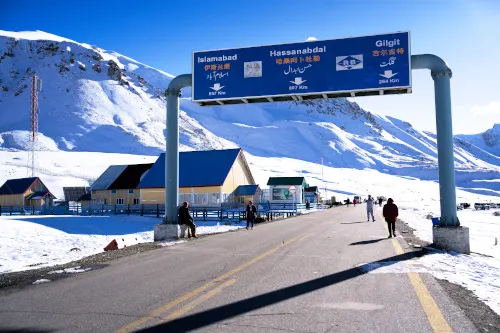
The Khunjerab Pass is a mountain pass located at a high altitude of 4,693 meters above sea level. It has a significant strategic position on the northern border of Pakistan and the southwestern border of China in the Xinjiang region. The pass is famous for its exceptional natural beauty and is the world's highest paved international border crossing. It also marks the highest point on the Karakoram Highway.
Booking.comDay 3
Our itinerary in Hunza Valley today differed from usual as we traveled by jeep instead of coach to reach the Hunza River and Nagar River confluence.

13. Confluence of Hunza and Nagar River
During our journey, we noticed some local people setting up tents by the river and searching for gold. Our local guide told us that these nomads moved from place to place.
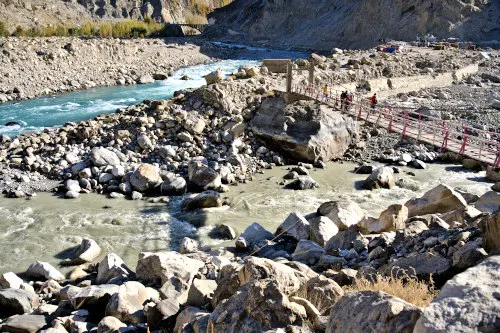
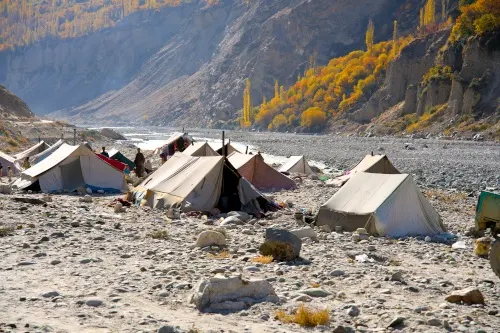
As we approached the tents, we could see families with children and babies living in them. The tents were their homes, and they did everything there. It seemed unlikely that the children would attend school, and they had already been part of the gold-searching team since they were young.
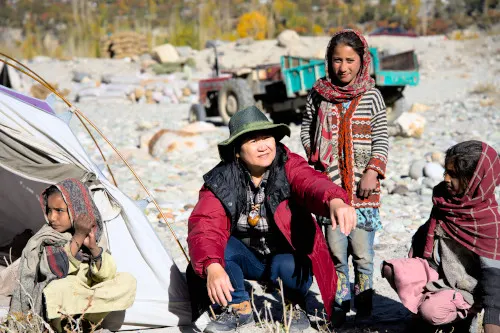
We gave them some snacks, and they were happy to receive our chocolates. We also took a closer look at their living conditions.
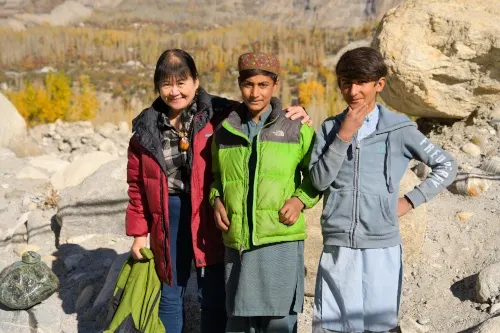
14. Nagar Khas
After our trip to the nomads, we made an impromptu stop at a scenic hilltop to capture the breathtaking view of the Golden Peak. Our guide thought adding this place to our itinerary would be a good idea since we had some extra time before heading to the Hoper Glacier. And indeed, the best spot of the mountains and scenery of the autumn season in front of us was worth the detour.

15. Hoper Glacier
After lunch at Hoper Inn for local cuisine, we visited the nearby Hoper Glacier to see it up close.
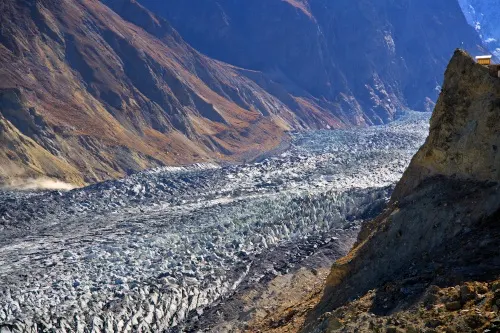
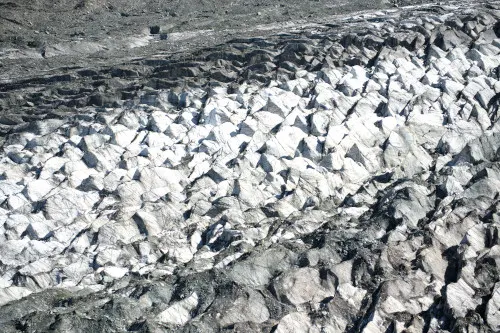
When viewed from a distance, the glacier's ice appears muddy due to dirt covering the surface, but it is solid. Although some of us were eager to look at the glacier up close, they ultimately abandoned the idea due to time constraints.
Note: I have written several articles about our trip to Northern Pakistan. To read our stories, please click here.
16. Altit Fort
Our next stop after lunch was Altit Fort, which we'll visit before checking in to Eagle's Nest Hotel.
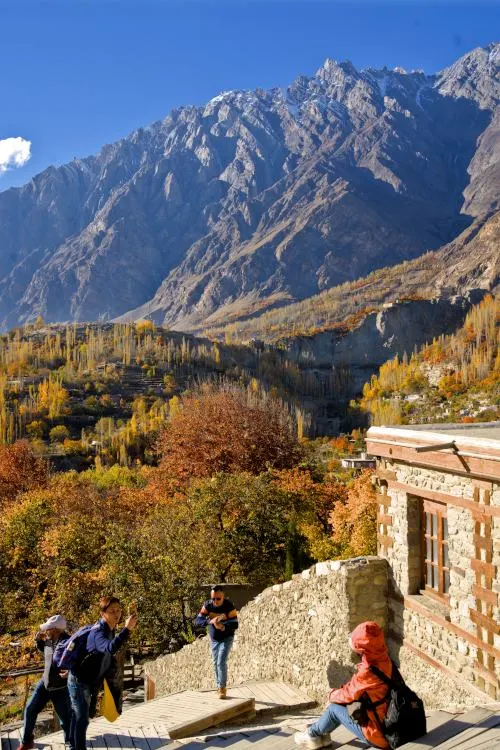
Altit Fort, also known as Khabasi Residence, is an ancient fort founded in the 11th century.
During the 16th century, the local prince married a princess from Baltistan who brought master Balti craftsmen to build two forts: Altit and Baltit.
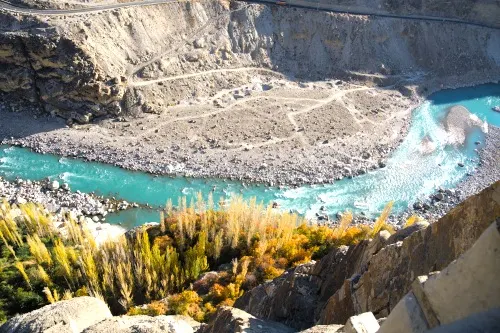
Originally, Altit Fort was home to the hereditary rulers of the Hunza state, who eventually moved to the somewhat younger Baltit Fort. Both forts are located next to each other, with "Altit" and "Baltit" respectively meaning "this side down" and "that way" in Brushushki. The Altiti Fort is the oldest standing structure in the Gilgit Baltistan region.

The guide at Altit Fort showed us around different areas, such as the guard room, the King and Queen's bedroom, and the bathroom. The view from the top of the fort was breathtaking, as we were greeted with a spectacular view of the Hunza River and the Karakoram Highway.
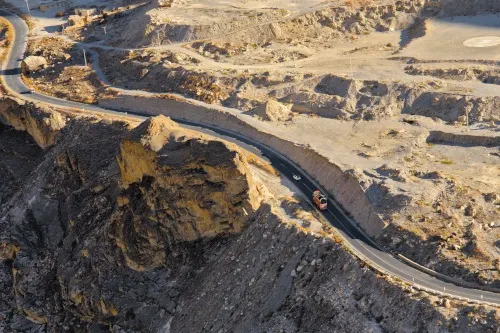
17. Duiker Hill
Our group left the fort and headed towards Duiker to witness the stunning sunset view from Duiker Hill. We have arranged to stay at the Eagle's Nest Hotel, just a few minutes from the Duiker Hill viewpoint.
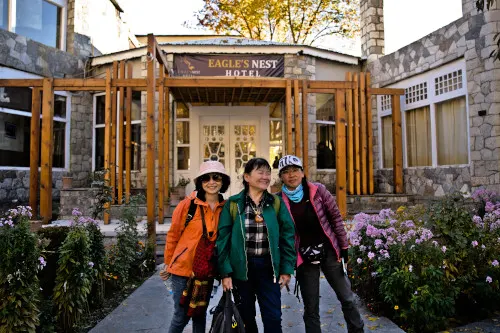

We were lucky to witness one of the most stunning sunsets ever. The sky was a flawless shade of blue, with no clouds in sight. We gazed out over the vast expanse of mountains and peaks, waiting patiently for the sun's rays to transform the landscape. And then, it happened. The golden light began to spread like a carpet over the distant mountain ranges, painting everything in its path.

We managed to snap some of our best sunset photos to remember this unforgettable experience forever.
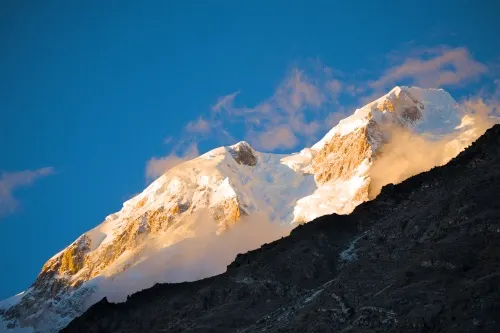
The next day, we headed to Skardu after visiting Hunza Valley. The adventure in Northern Pakistan continues, which will be documented in the upcoming article.
Our trip was organized by Go Holiday 360 Sdn Bhd. Please contact them for further inquiries.
Watch the video- we visit Hunza Valley 👇👇.


Suriaganthi Samy
Thursday 21st of November 2024
Hi,
would like to know how to visit Hunza, pakistan,
Whom do i contact to arrange to visit this places.
Thank you.
Warm regards Suriaganthi Samy Kuala Lumpur.
kwankp
Wednesday 27th of November 2024
We followed Go Holiday for this trip. Of course you can also contact others agents for comparison. Here is their website: https://www.goholiday360.com/tours/group/12d-pakistan-tour
zeeshan bhatti
Sunday 28th of July 2024
We follow Go Holiday 360 for this trip, which is inclusive of all the places we visit. Please check out their package here
Roslee
Saturday 27th of January 2024
How much tour package for 3 days in Hunza Valley start from Gilgit.
kwankp
Wednesday 31st of January 2024
We follow Go Holiday 360 for this trip, which is inclusive of all the places we visit. Please check out their package here : https://www.goholiday360.com/tours/group/2
Toong Foo
Saturday 18th of November 2023
I have never considered visiting this part of the world until now. The autumn colours of the trees and bushes blended with the mountains are amazing. Life may be simple but the people looked happy and content. Northern Pakistan is now on my list of places to visit. Thank you for sharing the incredible experience.
Esther
Saturday 18th of November 2023
Wow...really awesome photos ! I have read about the longevity of the people who live in Hunza valley. Looking at the photos and the description of the place it looks like a must visit!